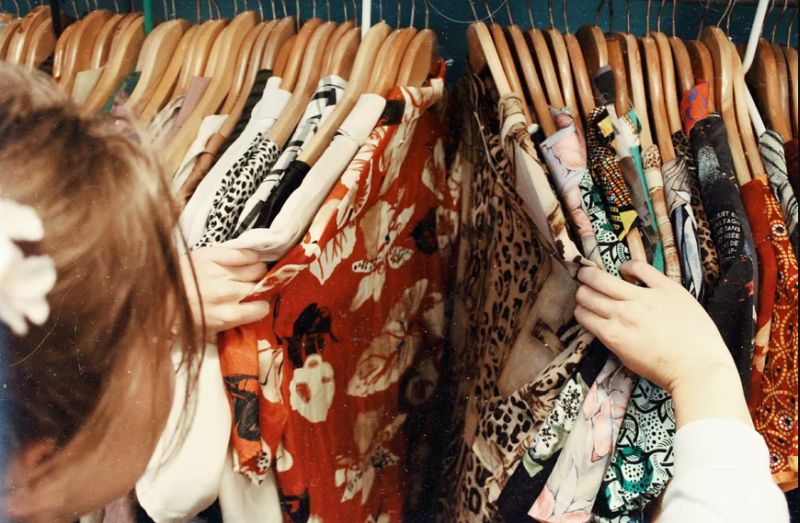Sustainability is a common concern in modern days. There is a heated discussion about the environmental impact of fast fashion and consumerism. So it is only reasonable for everyone to make an effort to reduce that.
If you enjoy fashion, it is possible to give in to your passion in a more sustainable way. And in many cases, it is more affordable, which is a great plus for college students that have to live on a budget. Here are some tips to help you out with that.
1. Inform Yourself
The first step is to understand how modern consumerism and production influence the environment. Start by doing research on the ways the clothing industry is connected to environmental issues. How the production of different fabrics is better or worse and how recyclable they are.
Also, look into the brand you like to buy from. It is pretty easy today to find out about means of production, ethical policies, and carbon footprint. Of course, as a college student, you might say that there is not enough time for additional research. Students are notorious for the lack of free time due to the college curriculum and part-time work.
It is sometimes challenging to go in-depth with sustainability research when you are busy writing endless essays and case studies. Yet, it is a matter of prioritization. If you struggle with completing writing assignments, WritePaper.com is the place to go to for help. It is a professional academic writing platform that offers assistance to all students in need. Here you can find a lot of tips and tricks and get help with writing, editing, and proofreading your papers.
Expert writers will nail any type of assignment in the shortest time. So you can keep your grades up, learn from professionals, and have a little time off.
2. Buy Less
The obvious way to reduce the environmental impact of fast fashion is to buy less. Today we buy 10 pieces whereas our grandmothers would have only bought 1. And it’s often the case that we do not need that many clothes.
Even the most eco-friendly brands still have some impact. And they transport their garments to your store or doorstep. So the easiest way to beat that is to have less of that.
For example, the founder of Eco-Age, Livia Firth, offers a great tip. Look at something and think about whether you are going to wear it at least 30 times. If not – do not buy it; it is not worth spending money on anyway.
To reduce consumerism, try:
- Capsule wardrobes;
- Universal pieces that last long and are easily combined with others;
- High-quality clothing that will last;
- Altering the pieces you already have;
- Jewelry instead of statement pieces you only wear once a year.
And the benefit of that is that you’ll save money as well.
3. Second Hand, Rent, or Swap
When you want to purchase something, there are more sustainable options than buying from mass-market shops. Here is how you can enjoy some shopping without leaving a huge carbon footprint:
- Purchase second-hand or vintage clothes. They have already been produced, so prolonging their lives costs zero energy. They are also more unique and can be styled exquisitely;
- Rent some pieces. When needing a beautiful garment for one night, just rent it instead of purchasing;
- Swap pieces with friends, relatives, mates, or people online;
- Buy from sustainable brands when you shop for a new thing. It is going to be more expensive, but look for higher quality that will serve or years;
- Buy at local shops because it reduces the carbon footprint of shipment/transportation.
Always go for quality instead of quantity.
4. Do Not Throw Away

Fast fashion comes at a low price and low quality. We got used to throwing out pieces we no longer like. But it is not ideal, to say the least. Do not just throw away something you no longer need or like. For others, it can be extremely valuable. And the longer a garment serves, the better it is for the planet.
It is also worth considering that many synthetic fabrics are not recyclable. Always opt for organic and natural ones.
When you have clothing you no longer need, here is what you can do:
- Give it to charity or people in need;
- Sell it online, on eBay, or different apps like Vinted;
- Give it to people in your circle, friends or family members;
- Alter or repurpose them;
- Give back to the shop if they have such a policy;
- Put in the textile recycle bin.
It is only a matter of time when all of this will be even easier with the new software and gadgets becoming a reality.
5. Wash Them Mindfully
Another thing a lot of people forget about is the impact of washing the garments. It requires a lot of energy and water resources, not to mention dangerous chemicals involved.
The average household in the US does 400 loads of laundry a year. It is a lot. And there are ways to beat that.
First of all, wear the garment more than once before putting it in a bin. A lot of clothes do not require constant cleaning. And it will help them to last longer and be in better shape. And you won’t have to stress a lot about the laundry too.
Secondly, use an efficient washing machine. It allows saving energy and water as well as your electricity bills.
The next thing is to wash full loads only to reduce energy and water use. Opt for green detergent.
Also, use cold water. 90% of the energy the washing machine uses goes to heating water. In the majority of cases, the cold one works just fine. Avoid dry cleaning as well. If possible, try to drip dry – it is the most environmentally-friendly way to dry the garments.
6. Choose Durable and Organic
It is necessary to take care of the things you have so they can serve you a good time. Some things you can fix on your own with a little sewing.
When looking for a new piece, make quality and durability your priorities. How to know if something is of good quality? Check these factors:
- Stitches and how neatly and well they are done;
- Test fabric by gentle pull test – does it come to the original shape easily? Then it is good;
- Choose thick materials instead of see-through;
- Look whether the fabric pattern matches the seams;
- Opt for metallic zippers.
Organic fabrics are always better for you and the plane as well. They reduce the number of pesticides used in production. And they are better on the skin.
When it is possible, invest in natural fabrics instead of synthetics. They are more recyclable and reusable. And they do not leave microplastic particles in the water during the washing.
Summary
If you love fashion, you can enjoy it without feeling like you’re harming the environment. Try to be creative and resourceful with how and where you purchase clothing. Do not throw things out; give them to others, recycle, or upcycle instead. Incorporate some evergreen pieces and vintage in your wardrobe.
Always choose quality over quantity. Look for organic and natural fabrics, make them last longer, and be mindful of your washing habits.
Article Submitted By Community Writer




